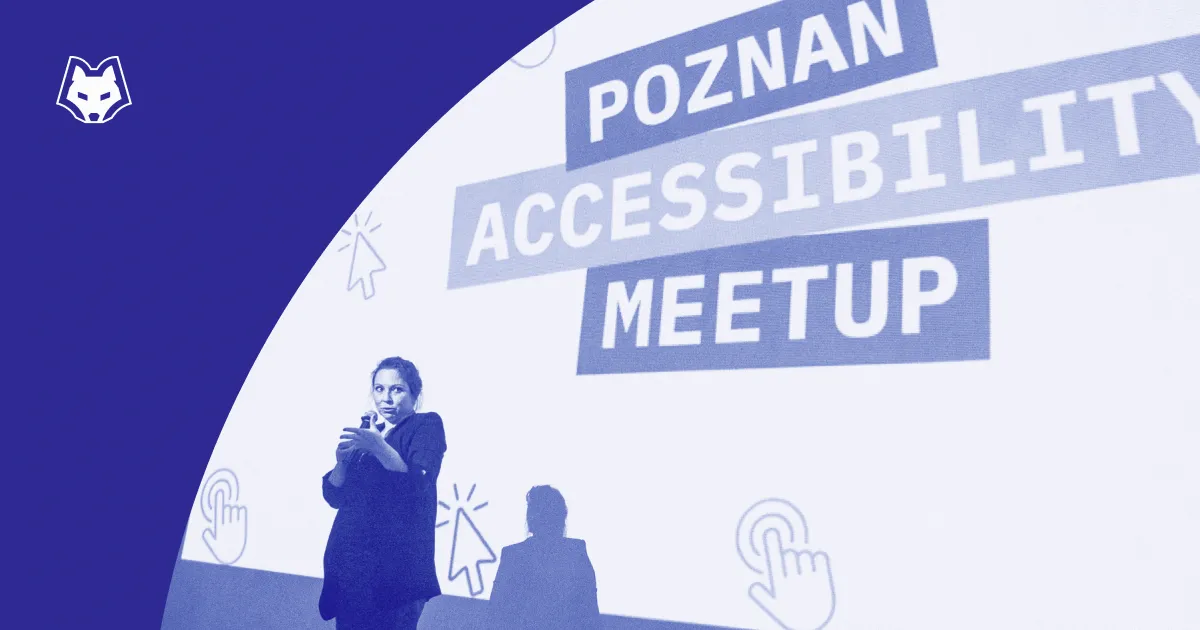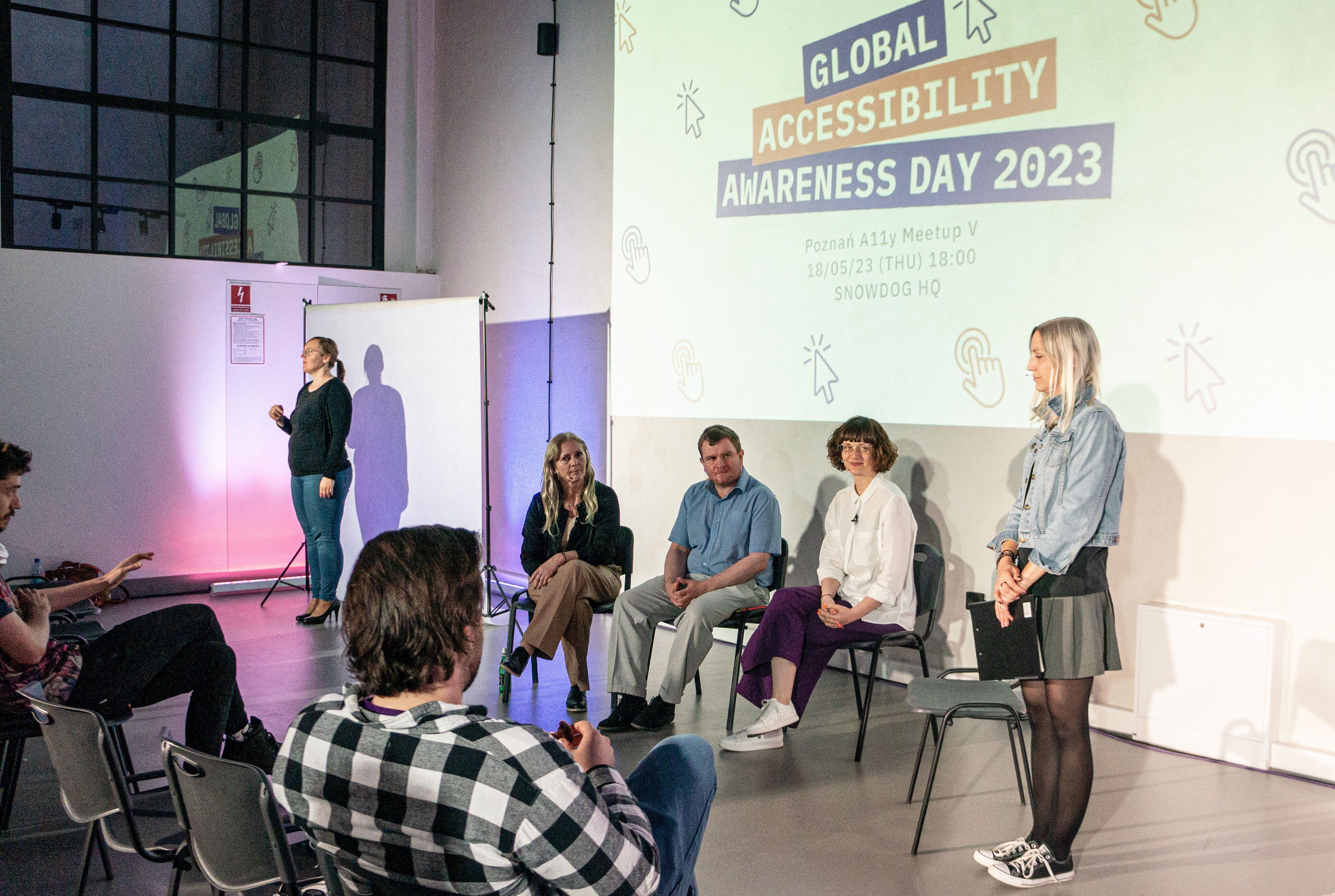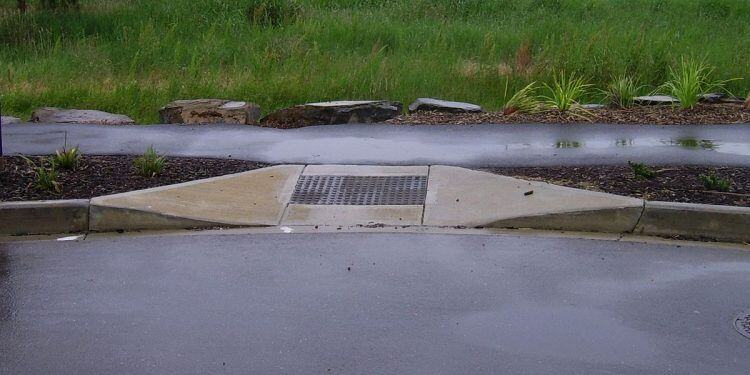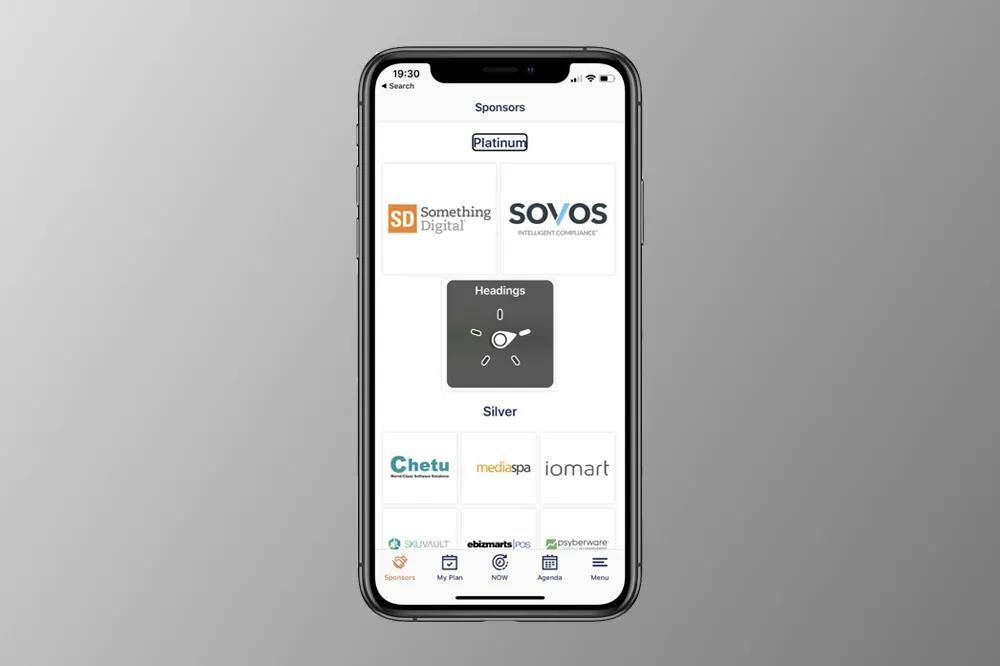
The Poznan Accessibility Meetup series is a relatively new initiative that holds great significance for us. As advocates for accessibility, we strive to implement inclusive practices and educate others on this important subject. In the middle of September, we gathered for the second instalment of the meetup to discuss the challenges of A11y (accessibility) in both the online and offline realms. The event featured three informative lectures and a vibrant exchange of insightful questions. To provide a comprehensive overview, we have prepared a summary of the key takeaways. Enjoy!
Exploring Eye Tracking as an Assistive Technology
We started off with a lecture from Katarzyna Łuszczak, founder of Atabi and an Augmentative and Alternative Communication specialist. One of the first things she mentioned was a quote:
Kuba doesn’t speak, so we both disappear. He’s vanishing, because people talk to me. I’m vanishing because they only talk about him. That’s two people less for the community. -Stefania Nowińska, Mother of 23-year-old Kuba who suffers from SMA (Spinal Muscular Atrophy).
That very insightful quote allows us to understand that the goal of assistive technology is not only to improve the life of a person with disability, but also all the people who take care of that person. It goes both ways, and allows them to be more independent in everyday life.

Katarzyna also gave us a superb explanation of both Assistive Technology and Augmentative and Alternative Communication. Assistive Technology is every item, product or system, which you can use in order to keep, improve or allow functional capabilities of a person. What you have to understand and remember is that Assistive Technology is not a person. Although, a person can be an assistant.
AAC is a bit more complex. It has two parts. Augmentative Communication and Alternative Communication. The first one is all about a situation where one can talk, but not clearly enough for others to understand. There’s a comprehensible need for augmentative communication methods in order to make that person more independent and communicative.
The latter — Alternative Communication, is a form of communication without the use of a speech. It applies to every disability where the person is communicating in any way. It means that Alternative Communication is also a form of Augmentative Communication.
I don’t speak but: I hear, I understand, I am an adult, I like to talk, I am here, I can hear what you say about me, I have a right to know and be a part of conversation. That quote is supposed to describe the feelings of the majority of people with disabilities. -Katarzyna Łuszczak
Eye tracking is one of the AAC’s components. In theory, it should be the solution to most problems with effective communication. There are some rules it ought to obey to make it as accurate as possible. For instance, eye tracking or eye controlling should happen exactly where one is looking, without even the slightest delay. The eyes’ shape, color, and size shouldn’t matter, neither should glasses. Only one eye is enough for using the tool. Unfortunately the technology is not yet perfect and things like glasses’ frames, makeup, long eyelashes or any reflection in your face’s area can make the usage challenging or even impossible.
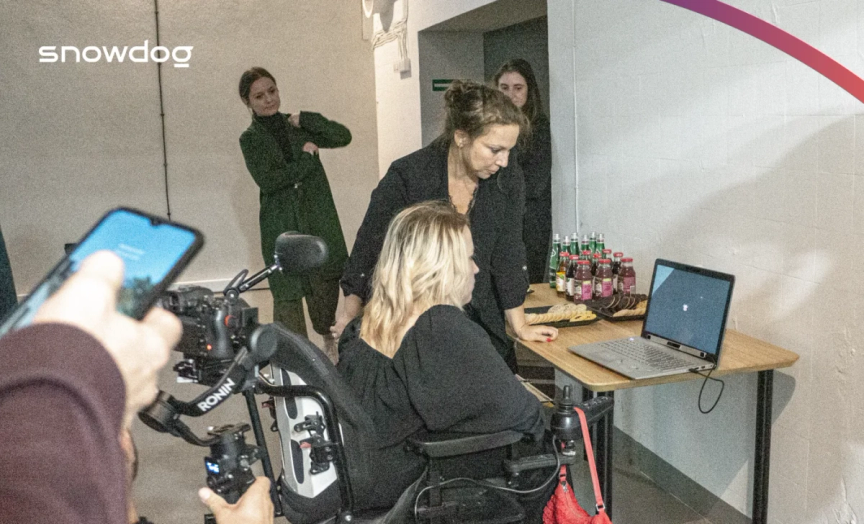
Technology gives hope to the hopeless. It gives voice to the people who don’t have it -Steve Gleason
Kasia also told us about amazing people who get so good at using their devices, so they can write messages faster than people with actual keyboards. She also mentioned people who create art with the use of eye tracking devices, like Sarah Ezekiel – a British painter.
In the meantime, a person from the audience has asked Katarzyna what are the most common problems that a person who uses an eye controlling device meets while being online?
From the top of my head, I can tell you about two most common issues. The first one is definitely a disappearing element, button or menu. That one is almost impossible to get through. It goes up and down very fast. Even I sometimes find it problematic with regular computer mouse. The second one are elements very close to the edge of the screen. Most of the eye trackers will take that as a look outside the screen, meaning you won’t be able to actually do anything.
At the end of Katarzyna Łuszczak’s lecture, she gave us a very clear sum up. 12 excellent pieces of advice on how to be a good conversation partner from AAC users:
- Be patient, it’s going to take a while
- Appreciate our effort to communicate
- Talk directly to us, not to the people who look after us
- Forget about stereotypes. We’re all different
- Let us explain what help do we need
- One question at a time!
- Use our nonverbal communication
- Don’t ignore things you don’t want to hear
- Don’t be uncomfortable in silence
- Don’t pretend like you understand, when you actually don’t
- Conversation goes both ways
- Don’t be afraid to ask me to repeat
Life’s story by Tomasz Grabowski
After the time off for networking and testing eye tracker, we started the second lecture. The video by Tomasz Grabowski. He’s a culture expert, and an Accessibility and IT specialist. As an AAC user, he is a member of the Council for assistive and alternative communication and easy-to-read and understandable text.
All of the video lecture resolved around his life’s story, which was very insightful. We heard about his experience as someone who’s affected by his disability from the day he was born. He told us how he grew up, and what it was like going to a school or playing with other kids. Those tales actually make you realize his perspective and how technology makes his life easier. Thanks to the AAC, he can communicate and be an active member of society.
Tomasz owns a YouTube channel where he shares his general thoughts, tells what does his life look like, but also some more technical things like how to adjust certain systems. For instance, here you can see one of his videos on his life experience in seeking employment.
Tomasz Grabowski has a YouTube Channel „Z punktu widzenia niemówiącego wózkersa”
I am an Uberholic
The last lecture of the day was Łukasz Garczewski’s. He is a Communication and Agile Project Management Specialist, Consultant, and a Trainer. Activist for the benefit of people with disabilities and a councilman of Rada Osiedla Rataje in Poznań.

He started his speech with a bold statement:
My name is Łukasz Garczewski, and I am an Uberholic. I’m addicted to using it.
He explained that because of his disability he finds other forms of transport almost impossible to use, so he is ordering Ubers as a most convenient one for him, but still not perfect. Why?
In theory, the app is simple. There are only a few steps here: You are somewhere. You order an Uber and you wait for someone to accept it. That person picks you up. Then you get a lift to your chosen spot. You’re there!
What could go wrong? Well, if you don’t have any disabilities, probably nothing. You’ll be fine, but if you are facing any mobility issues, then according to our speaker — everything could go wrong. He gave us some good explanation with examples.
The pickup spot
So let’s start with the first step. The pickup spot. When you order an Uber to a specific place, let’s say the train station in your city, you have no idea where the pin is going to land exactly on the map. Maybe the pickup spot is in front of an obstacle like stairs, or maybe it’s 200 meters further than you are now, and the driver can’t get any closer because of construction? The pickup is not always where you want it to be. It’s where the app tells the driver to go.
Waiting for the Uber
Then there’s the waiting time, which in some cases is connected to the first issue. He gave us a great example. In Poznan, Poland, the City Center is under construction. Most of the main streets are undrivable unless you have a lot of time and an off-road car. Łukasz told us a story, when he has ordered an Uber from Centrum Kultury Zamek to Poznan Main Station. The distance? About 1 kilometer on foot. For Łukasz with all that mess around it’s not walkable. He’s been waiting for an Uber. It’s been 30 minutes already. He clearly sees that the Uber is driving around the block, like he cannot find a spot to pick him up. The car stops. It’s been a few minutes and the driver calls him. Unfortunately, the driver speaks neither Polish nor English. The language barrier is a big issue. They cannot communicate. The driver is still not moving. He’s waiting for him to cancel the service. Now they’re both playing chicken, because cancelling is going to affect the person who did it.
We’re finally there
Łukasz was visiting Warsaw recently, and he was taken from the Central Station to the hotel he was staying at. He decided to type in the name of the hotel. The Uber took him exactly where he was supposed to be. Well, almost, because he was taken not to the front entrance, but to a street that’s on the side of the hotel. That meant he had to walk a few hundred meters to go around the corner and get inside.
What should you take from his lecture as a technology creator?
Remember that because something works for you, it’s not necessarily going to work for the others, especially if they have any mobility issues. When you try to solve a problem, make sure that you’re not creating new ones. Especially when it comes to changes made in the app. Make sure that there’s a working way of communicating, because the app itself sometimes fails.
Threatening someone might be a bad way of work model. The fact that Uber punishes its drivers for cancelling the ride, and does the same to a customer, is ridiculous. In a situation he described before, when a driver was just standing still because he couldn’t pick him up, everyone is losing time and money.
Allow the user to fix your service. Allow us to change the pin on the map, so it comes to actually more accessible place. Let us give you feedback easily, and actually read the notes we give you.
If there is no other option, only then let me say that I have different needs. Separation of your clients should be the last thing you do. The app should be accessible. One shouldn’t have to tell you that one has some sort of disability.
Poznan Accessibility Meetup II — Summary
The second meeting is already behind us. We’d like to thank again every single one of you who made it to the meetup and all the three lecturers. It was an amazing evening.
It’s time to look into the future and get ready for the 3rd meetup. We can’t give you any details yet, but watch Snowdog’s social media and most importantly, sing up to our LinkedIn group — Poznań Accessibility Group and Meetup Group.
Stay tuned and see you soon!

